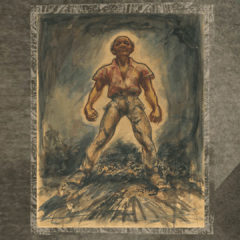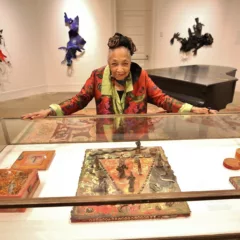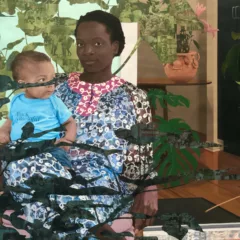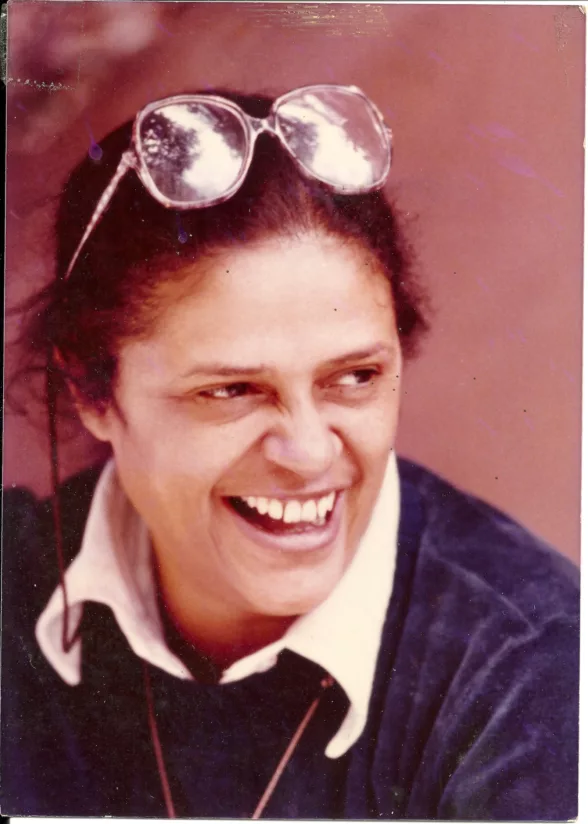
On a memorable evening in November 2015, during the closing reception of the Norman Lewis exhibition at the Pennsylvania Academy of the Fine Arts, I met Susan L. Taylor, the former editor of Essence Magazine and a slew of (now late) artists: Sam Gilliam, Faith Ringgold, and Betty Blayton (1937-2016). Blayton was an abstract painter and printmaker from Williamsburg, Virginia. I recently spoke to Betty’s younger brother, Oscar Blayton over Zoom who gave me fascinating details about her life, her contemporaries, and a deeper scope of printmaking.
Janyce Denise Glasper: Are you based in New York?
Oscar Blayton: No, I’m based in Virginia. Betty’s work is in New York. My son who lives in Manhattan interacts with the museums who want to look at her work or put it in a show. I’m working on Betty’s archives— her narrative, maintaining touch with her friends. In fact, my wife and I are headed to California later this month to see Rick [Richard] Mayhew. You’re familiar with him right?
Janyce: No.
Oscar: Rick was one of the artists of the 1960’s in the Spiral show, younger than Rommie (Romare Bearden), Charles White, and the other guys. Rick turned 100 in April. I couldn’t make his birthday party because my grandson had a birthday the same day. He’s been teaching out in California for years and has been collected by several people.
Janyce: What was it like growing up with Betty?
Oscar: She was eight years older— a teenager when I was coming into my consciousness. She was a good big sister, always interested in art.
She arrived in New York in 1960 and died there in 2016. She would travel during all those years. After I finished high school and before going to college, I spent a summer with her in 1963. While I went up to NYU to take some courses to bolster my academic abilities, I stayed with her. It was a very interesting summer. That was the summer Spiral formed. Back then, the Kennedy Administration put money into trying to help urban disadvantaged youth. It was a project called the Harlem Youth Act [Harlem Youth Opportunities Unlimited acronymed HARYOU]—- Dr. Kenneth Clark’s brain child. The academic curriculum was put together by Neil Degraase Tyson’s father, Cyril de Grasse Tyson. HARYOU had different programs— music, literature, visual arts, and other stuff. Betty and Norman Lewis were the art instructors as well as James Conroy Yeargans. You’re familiar with Norman?
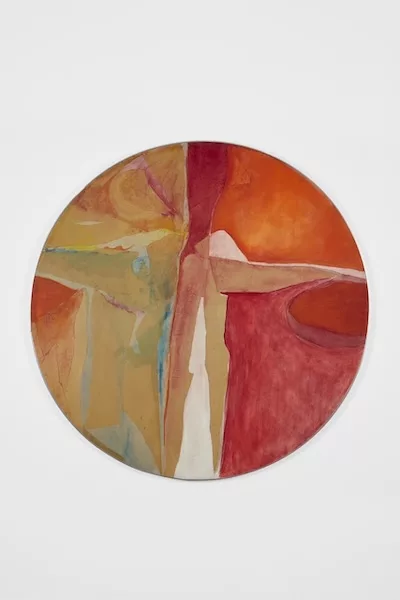
Janyce: Yes! That’s where I met Betty— at his retrospective in Philadelphia.
Oscar: Oh okay. Norman was a much more experienced artist than Betty, but he didn’t want to be doing the administrative side. He just wanted to work with the kids and teach them. They made Betty the co-head of the visual arts division. She deferred most of it to Norman. They became very good friends over the years. When Norman died, she stayed close with his wife, Ouida. Anyway, when the money hit the table, a lot of politicians stuck their hands in it. Betty said that ‘it went from honest types walking around in jeans and sneakers to a bunch of folks connected to politicians in high heels and pearls.’ The money started disappearing. When she complained down at City Hall, she got fired.
Janyce: She got fired from the Harlem Youth Project?
Oscar: Right. This was after Dr. Clark had left. Things were getting out of control.
Janyce: Were you living in Virginia while she was trying to make it in New York or did she have to return home?
Oscar: I got drafted in 1966 and went into the Marines. I wound up in flight school and stayed with the Marine Corps for six years. When I got out, I finished my education and went to law school, then came to Virginia to practice. On occasion, I did visit Betty. We stayed close and would see each other at home.
Janyce: Was it just you and Betty and was anyone else in your family interested in art as well?
Oscar: It was actually four of us growing up. My oldest sister who’s older than Betty is still living. Betty was born in 1937. My older brother Jimmy was born in December 1943, twenty months older than me. I was born in 1945. Jimmy became a metal sculptor. He sold a number of his pieces, but didn’t get to be known as well as Betty. As a matter of fact, he spent a year in New York working with the Children’s Art Carnival (CAC). The Museum of Modern Art (MoMA) funded it during its early years. Betty became the founding director. She was there from 1969 until 2007 or 2008. It was an organization in Harlem to help kids develop through experiencing art. They had painting, sculpture, and printmaking. They reinvigorated. Are you familiar with robin holder, Emmett Wigglesworth, and Steve Mayo?
Janyce: No, I’m not.
Oscar: Well, they were pretty well-known artists that worked at the Carnival. As you know, it’s not that easy making a living—putting food on the table— as an artist. Betty, The Carnival, and Robert Blackburn’s Printmaking Workshop were two organizations that were able to provide income to the artists. Are you familiar with Robert Blackburn’s Printmaking Workshop?
Janyce: Yes.
Oscar: Betty and Bob were pretty close. Some people would work for both of them. If Bob ran low on funds, when Betty would have funding then folks from his organization would come over and work with her. Artists were able to buy food and buy a tube of paint every now and then.
Janyce: Did you ever see her in action? Did you visit her studio?
Oscar: Oh yes! Betty normally worked in her house.
Janyce: Was she still printmaking during the later parts of her life? Printmaking is an expensive practice. You need space to be able to create prints and a drying rack. It’s a whole process.
Oscar: Betty had a press in her house—an old 18th century farmhouse that’s still standing in the Bronx. It had plenty of room. She set up a print shop there, but she always had difficulty with her press. Most of her work is with Blackburn. Are you a printmaker as well?
Janyce: Yes, I am.
Oscar: Then you would probably know Benjamin Wigfall. Are you familiar with him?
Janyce: No, I’m not.
Oscar: He had a print workshop in upstate New York near Kingston. A lot of people came and worked with him—Rommie, Hale Woodruff. They just did an exhibit that started in 2022. There were about thirty to forty different printmakers including Mavis Pusey. She left Virginia around the 1980s and took a teaching job at a little private school. Look up Ben Wigfall— Communications Village. After Bob (Blackburn), Ben was one of the most noted printmakers or persons promoting printmaking by African Americans in this country.
Janyce: My printmaking history classes did not touch base on many African American printmakers. Only Elizabeth Catlett received any mention. I always felt like something was missing in that regard.
Oscar: Well, Elizabeth also worked at both Bob and Ben’s workshops.
Janyce: Okay. That’s great to know. You told me that you were trying to get Betty into more shows and gallery collections. She recently had a show in London?
Oscar: Yes. People want to show her canvases, but she has more prints. I’m working on getting her prints acquired. We sold some of them. She has works at Stanford, the Metropolitan Museum of Art, Kemper Museum, Virginia Museum of Fine Arts. Everyone wants her canvases, but her prints are interesting as well.
Janyce: Do you have a list of dream museums and/or galleries that you want to see her work collected by?
Oscar: Yeah, but I’m keeping that close.
Janyce: I thought, wouldn’t it be great if she was in the Spelman collection?
Oscar: Actually, Spelman has a canvas of hers. They bought it from her in 1981. In fact, it’s on tour right now—the Walden Family is funding it— in about four to five different cities.
Janyce: I wanted to talk about Betty. Like Vivian Browne, these artists are not as well known and deserve notice.
Oscar: Yes, well, Vivian and Betty were good friends. Spiral formed in the summer of 1963. Basically, Rommie (Beardon) and Hale (Woodruff) put it together. The only woman that got to hang around them was Emma Amos. Hale was good friends with Emma’s parents in Atlanta— where they’re both from. He promised that he would take care of her, look out for her. Betty and Vivian would come to Spiral meetings and get pissed off because the guys were paternalistic [Spiral had fourteen male members total]. Then, a woman’s group formed— which was mostly white women— and they had certain ideas that we would call racist today. So Betty and Vivian didn’t have a home so to speak.
Janyce: Did Betty and Vivian ever form their own thing?
Oscar: No. There weren’t a great many Black female artists at that time. Elizabeth Catlett was in Mexico. She was considered undesirable during the Communist scare of the 1950s, eventually allowed to come back to the states. She and Betty became friends. Betty was one of the people who wrote a letter to Congress— or the State Department as it was—asking that Catlett have her citizenship restored.
Janyce: While you’re going through Betty’s archives, are there any letters or personal writings?
Oscar: Yes. I have been digitizing her things for the last few years. I try to spend an hour per day on it. Takes a while. I have mostly notebooks and cards, but don’t have many letters. She was friends with Leroy Jones who became Amiri Baraka. His daughter Kellie Jones has been very helpful in terms of sending information on guiding us. You’re familiar with Charles White?
Janyce: Yes.
Oscar: His son Ian is an artist. Kellie introduced us to Ian and Ian is handling Charles’s estate. A lot of people will try to rip you off if you don’t know. It’s pretty important that I protect Betty’s narrative.
Janyce: A legacy should be taken care of by someone who cares about it. Did Betty ever have gallery representation in her lifetime?
Oscar: No. She never had gallery representation. She would go around to galleries and show her work. Back in those days, artists would take images of their work around on Kodak slides and use handheld viewers to show slides to gallerists. There were no computers or laptops or iPads to carry around. So we’d go down to the galleries down in the Village. There wasn’t a great deal of interest in African American art at that time. The white gallery owners weren’t interested in any Black art. The few Black galleries were interested in figurative work and a lot of people were doing work that echoes the revolution. They wanted to see the raised fist in the air. You know, Sam Gilliam, right?
Janyce: Yes.
Oscar: Sam was good friends with Betty too. Sam, Betty, and Richard Mayhew were abstract artists— three of the most vocal regarding abstract work. Sam said that they had to fight like hell. I had a conversation with an artist a little bit younger than Betty who said, ‘I was one of the people giving them hell because I thought that art had to support the revolution— show the brothers and sisters. Now that I’m older, and it’s forty years later, I understand what they were doing.’
Janyce: During my undergraduate 20th century art history class, Jean-Michel Basquiat was the only Black abstract artist talked about. It hurts me as a Black woman artist to have to experience this ongoing absence. That’s why it’s important to bring up Betty, Vivian, Emma, and other artists who are not talked about as much. I want to continue pushing Black artists— Black women artists through writing and dialogue. Their work matters and shouldn’t be allowed to slip beneath the cracks.
Read more articles by Janyce Denise Glasper on Artblog.


